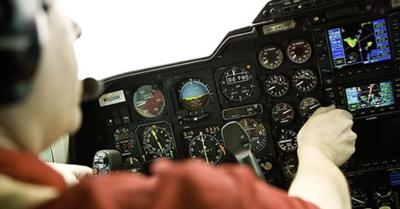Wed, Aug 23, 2017
FAA Has Reported Nonemergency Use Of The Frequency To The Communications Agency
The NBAA has issued a notice to its members making them aware that the FCC Enforcement Bureau is working with the FAA to investigate the misuse of – and harmful interference to – the “Mayday” frequency of 121.5 MHz, said Sarah Wolf, NBAA senior manager of security and facilitation.

“As all pilots know, this frequency is dedicated to aviation emergencies and distress,” she said.
The FAA constantly monitors 121.5 MHz for actual distress calls and emergencies, and an FAA report of nonemergency use of the frequency, which impedes its ability to monitor it, led to the first FCC Enforcement Advisory of the year on Aug. 8. The advisory made clear that the “FCC Enforcement Bureau will aggressively enforce the rules related to aviation radio operations” to ensure the integrity of safety and distress frequencies that are vital to safeguarding lives and property.
The advisory reiterated that on this frequency, FCC rules prohibit false distress and emergency messages and all superfluous communications. This includes obscene, profane or indecent messages; general calls not addressed to a specific station; routine messages; radio tests; and recorded audio such as music.
If the FCC Enforcement Bureau finds an individual in violation, the fines top out at $19,246 for a single violation and up to $144,344 for an ongoing violation. The FCC can also seize the offending radio equipment and impose criminal sanctions. To avoid these consequences, and preserve the safety provided by 121.5 MHz, Wolf said pilots should preserve the sanctity of the Mayday frequency because the FAA investigates each distress call immediately.
Most pilots who need to communicate air-to-air should select 122.750 MHz, which is dedicated to this purpose. Those aircraft flying at the Flight Levels should use 122.975 to prevent interference with 122.750 due to their large high altitude footprint.
(Source: NBAA. Image provided)
More News
From 2023 (YouTube Version): Legacy of a Titan Robert (Bob) Anderson Hoover was a fighter pilot, test pilot, flight instructor, and air show superstar. More so, Bob Hoover was an i>[...]
Get The Latest in Aviation News NOW on Instagram Are you on Instagram yet? It's been around for a few years, quietly picking up traction mostly thanks to everybody's new obsession >[...]
Aero Linx: B-52H Stratofortress The B-52H Stratofortress is a long-range, heavy bomber that can perform a variety of missions. The bomber is capable of flying at high subsonic spee>[...]
Altimeter Setting The barometric pressure reading used to adjust a pressure altimeter for variations in existing atmospheric pressure or to the standard altimeter setting (29.92).>[...]
"Knowing that we play an active part in bettering people's lives is extremely rewarding. My team and I are very thankful for the opportunity to be here and to help in any way we ca>[...]
 Classic Aero-TV: Remembering Bob Hoover
Classic Aero-TV: Remembering Bob Hoover ANN FAQ: Follow Us On Instagram!
ANN FAQ: Follow Us On Instagram! ANN's Daily Aero-Linx (05.15.24)
ANN's Daily Aero-Linx (05.15.24) ANN's Daily Aero-Term (05.15.24):Altimeter Setting
ANN's Daily Aero-Term (05.15.24):Altimeter Setting Aero-News: Quote of the Day (05.16.24)
Aero-News: Quote of the Day (05.16.24)



